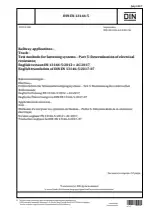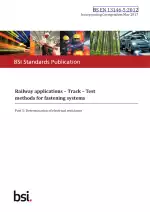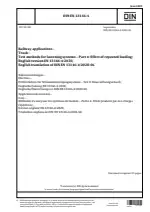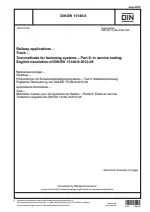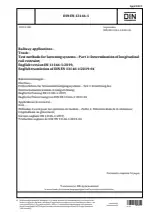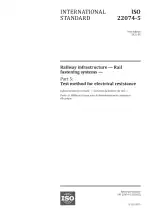Railway Applications - Track - Test Methods for Fastening Systems - Part 5: Determination of Electrical Resistance
Also Known As:
DIN EN 13146-5 is a standard for railway applications that focuses on track fastening systems. Specifically, Part 5 of this standard outlines a laboratory test method for measuring the electrical resistance between the running rails. This test is conducted under wet conditions and is applicable to fastening systems attached to steel or concrete sleepers, bearers, or elements of slab track.
The purpose of this standard is to ensure that the electrical resistance of the fastening system meets the required specifications, particularly for signaling currents rather than traction currents. By determining the electrical resistance of the fastening assembly, railway operators can ensure proper signaling functionality and ensure the safety of railway operations.
| Descriptors | Capacitive loads, Determination, Durability, Electrical conductivity, Electrical resistance, Fasteners, Fixings, Laboratory testing, Methods for measuring, Permanent ways, Quality requirements, Rail fastening systems, Railway applications, Railway construction, Railway installations, Railways, Roadways, Sleepers, Testing, Tracks (materials handling equipment), Voltage, Water, Wetness, Permanency, Pavements (roads), Sheets, Ties, Travel ways, Superstructure |
| ICS Codes | 93.100 - Construction of railways |
| Language(s) | English |
| File Size | 972.8 KB |

